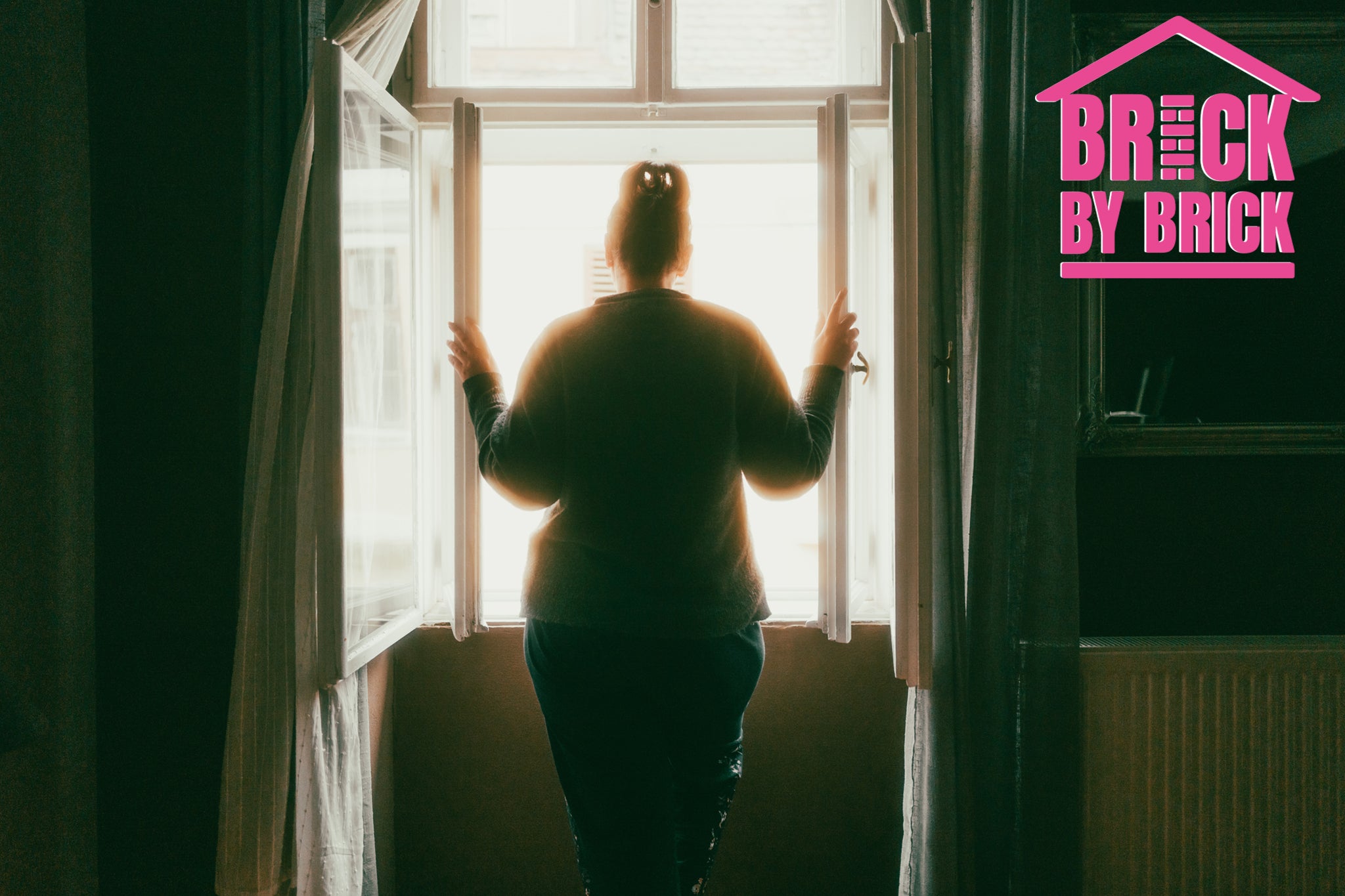Jasminder* didn’t realise she was being abused until she left her partner. He controlled her finances, tracked her movements and sent intimidating messages as their relationship fell apart.
When she needed a new phone, her then husband told her she had such a terrible credit score, the contract would have to be taken out in his name.
Jasminder had no idea if this was true as he wouldn’t let her to access their joint bank account. This led to every call being monitored and each friend being interrogated. It was years before she finally broke free.
“I have no bruises to show, but he destroyed me in every sense,” she told The Independent.
Jasminder’s interview comes as The Independent continues its Brick by Brick campaign with the charity Refuge to raise thousands to build safe houses for survivors of domestic abuse.
Generous readers and celebrities have so far donated enough to build one home, with money now being raised to build a second.
Be a brick, buy a brick and donate here or text BRICK to 70560 to donate £15

Her story is one that is becoming increasingly common, as technology-linked domestic abuse soars to unprecedented levels. Campaigners have warned the police are woefully ill-equipped to deal with the issue.
Refuge defines tech-enabled domestic abuse as, but not limited to, deepfakes, controlling online access, breaking communications equipment, online harassment and misuse of tracking devices.
Between August 2022 and July 2023, there were 48,170 violent domestic abuse cases against women and girls which included an online element, according to the National Police Chiefs’ Council (NPCC).
Of the 4,785 women receiving long term substantial support from Refuge this year, 1,531 had experienced significant tech-linked domestic abuse, but experts say this is only the tip of the iceberg.
Jasminder met her partner while at university. After their marriage, she and her husband moved in with his family in the South East. The coercive and economic control began shortly after the wedding, when she began her training for a job in the city.
“I was quite young and just finished university, so I didn’t have much money,” she said. “In that first year, I lost an incredible amount of weight because I couldn’t afford to buy myself food and he wouldn’t provide me with any money.
“Eventually, I opened a joint account with him, and that came from a place of desperation. My family knew I was struggling, and I had no financial means to support myself.”
Jasminder’s partner controlled all her finances and would not let her access the account, even though her salary was paid into it.

“I’ve never had a credit card, and I had little student debt,” Jasminder said. “There was no reason for me to have a bad credit score. So, he put the phone contract under his name. I didn’t realise at first, but he did that so he could monitor all my phone calls.
“Towards the end of the marriage, I would ring my mum a lot in tears. But because I lived with my in-laws I had to leave the house to call her. When I’d return home, he always asked me who I was on the phone to. At the time, I didn’t know he knew exactly who I was calling.”

During the divorce, Jasminder’s ex-husband stopped all contributions to their joint account. His salary stopped being paid to the account and he started draining their joint savings through online banking.
“When we separated, he would send me long emails late at night, blaming me for the breakup of the marriage,” she added. “He would also tell me that I should forgive him. A lot of these emails would come in the middle of the night, and he also sent them to my work email.
“He used to send me intimidating messages on WhatsApp. One time when he was with the children, he messaged to say ‘they didn’t want to go back to yours, they were having so much fun’.
“He never used to use social media, but he’d post pictures with the children on Facebook to show what an amazing dad he was. Why did the children have to suffer in the middle of all of this?”

Refuge set up its specialist technology-facilitated abuse and economic empowerment service in 2017. Since then, cases have grown both in quantity and complexity.
New analysis exclusively shared with The Independent showed the specialist tech team at Refuge reported a 207 per cent increase in referrals compared to its first year of service. Some 514 women were referred to the team in 2023, compared to 167 in 2018.
Emma Pickering, from Refuge, said the unprecedented rise in tech abuse is because now “options are limitless”.
“There are so many products on the market that are targeted towards monitoring and tracking under the guise of supportive monitoring,” she told The Independent.
“But we know that perpetrators are abusing these in a way that’s harmful to survivors. Currently, police teams dealing with tech-enabled domestic abuse and VAWG have limited resources and capacity to effectively tackle the issue.”
Deputy chief constable Maggie Blyth, deputy CEO at the College of Policing and NPCC coordinator on VAWG, said violence against women and girls is a huge concern to the police.
“VAWG can no longer be addressed through law enforcement alone,” she told The Independent. “We require a whole-system approach which brings together criminal justice partners, government bodies, charities, and the tech industry.
“The pace of technology is changing quickly, and we’re further training officers so they can collect and analyse evidence when a perpetrator is using technology, and to ensure victims get a timely, professional response.
“We understand victims may at times feel frustrated, but I want to assure them that wherever there is credible evidence, we would always expect police forces to investigate thoroughly, and do everything they can to protect women and girls.”
*Jasminder’s name has been changed to protect her identity.
Please donate now to the Brick by Brick campaign, launched by The Independent and charity Refuge, to help raise £300,000 to build a second safe space for women where they can escape domestic abuse, rebuild their lives and make new futures

